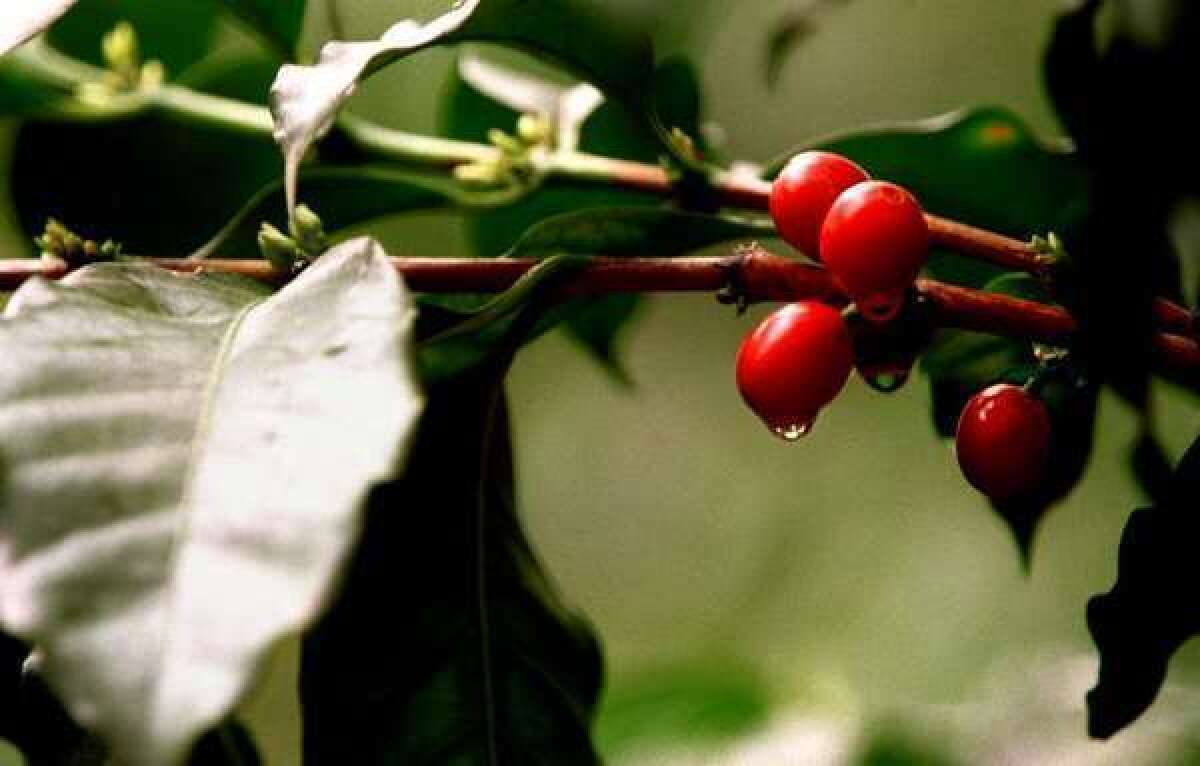Climate change: taking a toll on coffee?

- Share via
If there’s one thing many of us count on — in good times and in bad, in rain or shine — it’s a bracing cup of coffee in the morning.
But researchers demonstrated this week that the beloved cup of joe may be at dire risk from climate change.
Writing in the journal PLoS One on Wednesday, research botanist Aaron Davis of the Royal Botanic Gardens, Kew in London and colleagues reported that climate warming could drive wild varieties of Coffea arabica to extinction by 2080.
Using a computer model, the group analyzed different warming scenarios, focusing on 20-year time spans around 2020, 2050 and 2080. In the best-case scenario for 2080, the African habitats they studied — in Ethiopia, the Sudan and Kenya — would experience a 65% reduction in suitable localities for planting. In the worst-case scenario, suitable localities declined nearly 100%.
“Our modeling shows a profoundly negative trend for the future distribution of indigenous Arabica coffee under the influence of accelerated global climate change,” the study authors wrote.
Arabica is the prized plant that produces 70% of the more than $15 billion worth of coffee sold around the world each year. Mostly it is cultivated on farms, which grow varieties descended from a small number of plants that were carried out of Ethiopia in the 1600s and 1700s, Davis told National Geographic this week.
The lack of genetic diversity in cultivated Arabica plants is a cause for concern for the industry, Davis said, noting that “Arabica’s history is punctuated by problems with diseases, pests, and productivity problems — and growers have always gone back to the wild and used genetic diversity to address them.” By interbreeding wild plants with resistance to pests or climate extremes with the cultivated varieties, they could maintain healthy crops.
But if wild varieties disappear, stressed by relatively high temperatures, genetic diversity would disappear as well, leaving little in growers’ breeding toolbox.
All isn’t yet lost, the study suggested. The team’s analysis identified “core localities” where coffee plants were likely to withstand climate change. Such places, they wrote, some of which are located in already-protected areas, could be marked for careful conservation.
What’s more, they added, continuing genetic studies of the hardier wild Arabica varieties could help researchers identify the variants that improve heat and drought tolerance and mix those genes into cultivated populations.
“As part of a future-proofing resource, and especially for providing genetic potential for mitigating climate change, indigenous populations are perceived as a key resource for the medium- to long-term sustainability of Arabica production,” they wrote.
Climate change isn’t a threat only to wild coffee — it threatens domesticated plants, too. In 2011, Los Angeles Times contributor Melissa Allison wrote a story looking at how climate change was making life difficult for growers of Arabica plants in Costa Rica.







